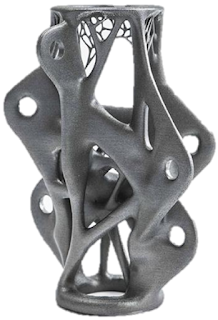FEM: Mesh quality and body simplification (Part 1) - Types of Elements
Have ever you asked: Why the mesh is so important for FEM? Which are differences between elements in FEM? In this article, we will briefly answer these questions:
Mesh quality and body simplification:
We can consider the mesh is the “soul” of a
Finite Elements Methods (FEM), once that it will discretization the body,
splitting it into several small elements. Therefore, get a proper mesh must be
a priority to getting satisfactory
results and processing speed. Moreover, for each kind of analysis (linear and
nonlinear mechanic, CFD, explicit, hydrodynamic, electromagnetic etc), there
are proper metrics to generate the mesh.
Body geometry and mesh are directly linked. Due
it, to get a good mesh, we need not only use the correct mesh parameters, but
also, we need to check the body geometry and adjust it where is necessary.
How to check if we have a proper mesh and how to improve it:
Good FEM software
normally have tools to automatically set
good mesh parameters as possible. But it isn’t enough to have an ideal mesh at
all. Some interaction between user and software frequently are required.
There are some key factors in the
mesh and strategies to be considered:
-
Solid, surface or bar/beam model:
In order to get faster processing, some solid
bodies can be converted into surfaces or bars/beams without lose the quality of
the result. Let´s check all situations:
Solid: We must use solid body (and
solid mesh) when all dimensions (x, y and z-axis)
have the same order of magnitude and when isn´t possible to simplify variations
of shape and there is the triple stress state.
Figure 1 – Solid body
with all dimensions with the same order of magnitude. Font: ESSS.
Figure 2 - Triple stress estate. Font: Boston University
Figure 2 - Triple stress estate. Font: Boston University
Figure 3 - The most common 3D elements.
In general, the tetrahedrons are
better for complex geometry, at where there are organic curves and inconstant
shape format. By another hand, the mesh will need more element and nodes,
requiring more time of processing and a homogeneity is more difficult to
achieve. Hexahedrons and pentahedrons are better for planar geometries or with
a predominance of straight angle and constantly volumes, and it needs less processing time in
comparison with tetrahedrons. The superior order allows getting special
adjustments of element format, allowing
to work out with parabolic curves and gets more accuracy results, but by
another hand, to solve the matrix equation made with non-linear elements become
computationally heavier.
Surface: We can use a surface body when the thickness is
constant and much smaller than other size dimensions and there is a plane stress
state.
Figure 5 - Plane stress. Font: Boston University
Despite the body and mesh being surfaces, is important to know that we must
have the value of thickness associated, where it will be incorporated to the element and used on calculation to solve the
equations system. In other words, we cannot see the thickness, but once it is
constant, it exists as a value into the
element parameters. The conversion to a surface is done
by the midpoint of upper and bottom surfaces of the solid body.
The most
common two-dimensional elements are:
Figure 6 - The most common 2D elements.
Such as tridimensional elements,
triangles elements fit better for complex surfaces, while
quadrilaterals fit better to regular
surfaces. As with three-dimensional elements, the
superior order allows getting special adjustments of element format, allowing to work out with
parabolic curves and gets more accuracy results, but by another hand, to solve
the matrix equation made with non-linear elements become computationally
heavier.
Bar/Beam: We can use a bar/beam body when the
section profile is constant and is much smaller than the length and there is a
unidimensional stress. This simplification is widely used on beams analysis.
Figure 7 - A beam that can be converted into
a bar/beam model.
Despite the body and mesh are bars/beams, is
important to know that we must have the section profile parameters associated,
where it will be incorporated to the element
and used on calculation to solve the equations system. In other words, we
cannot see the section profile, but once it is constant, it exists as a value into the element parameters.
The most common unidimensional elements are:
Figure 9 - The most common 1D elements.











Comments
Post a Comment